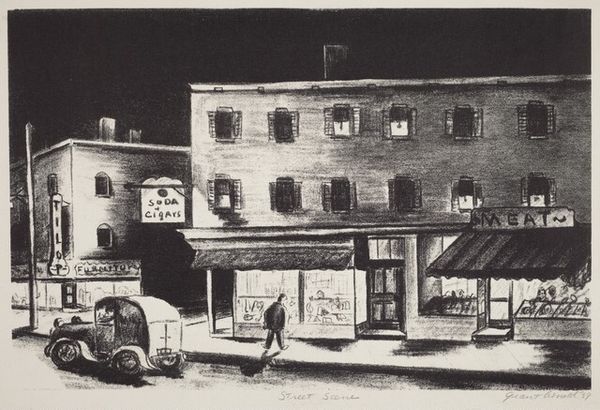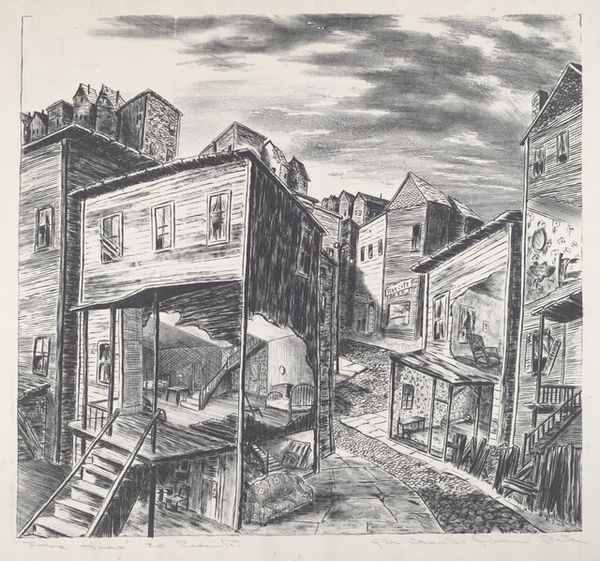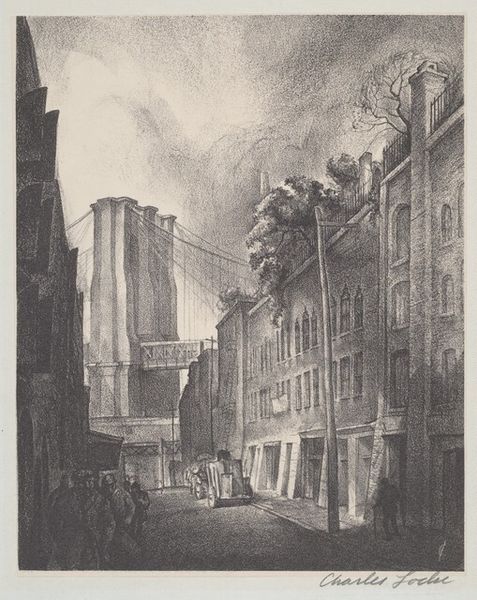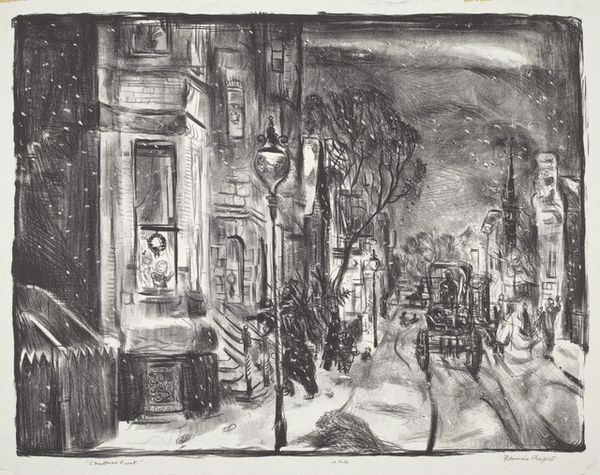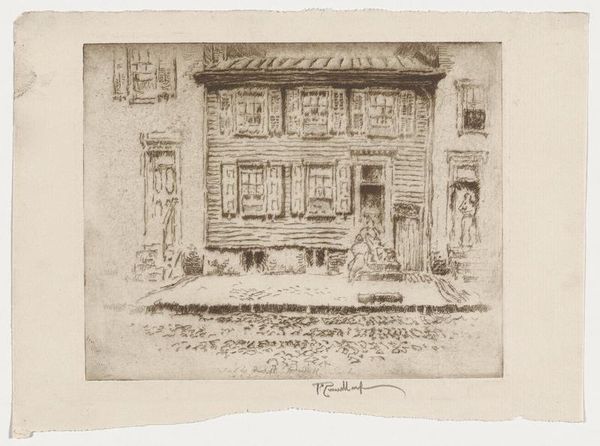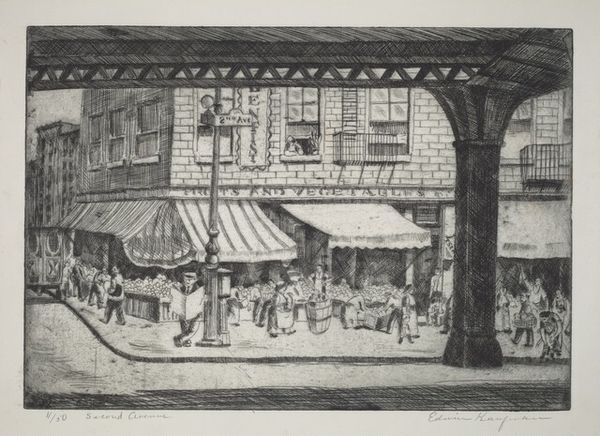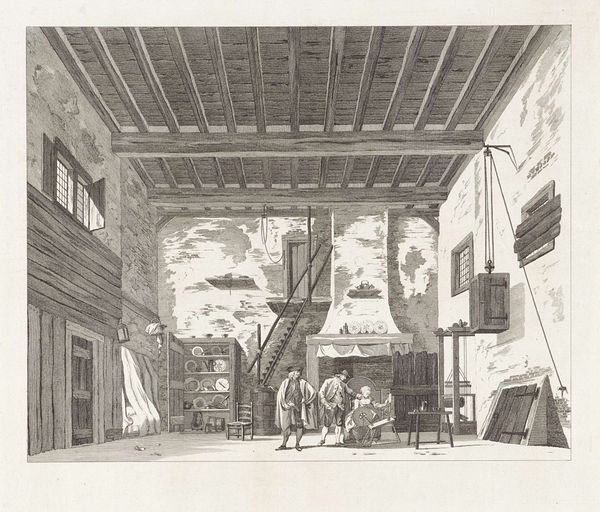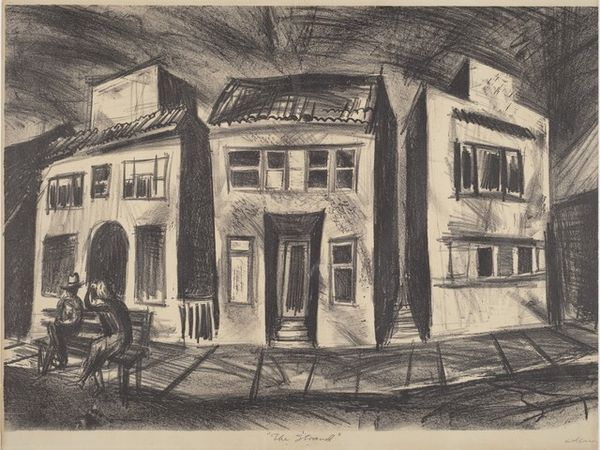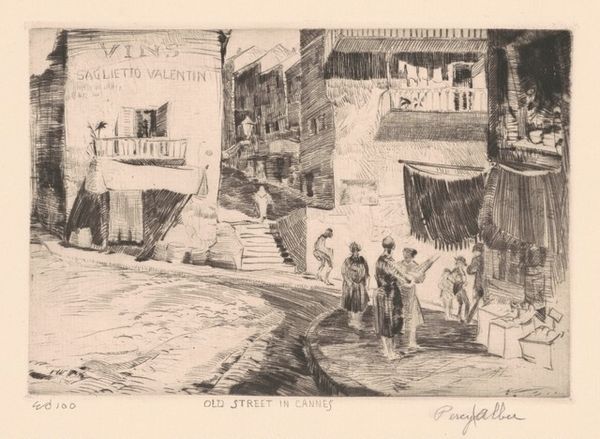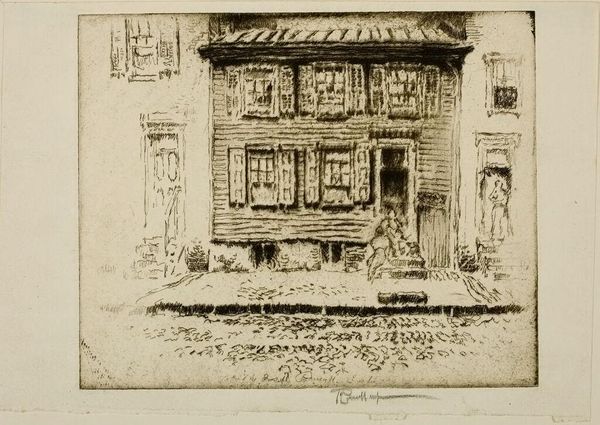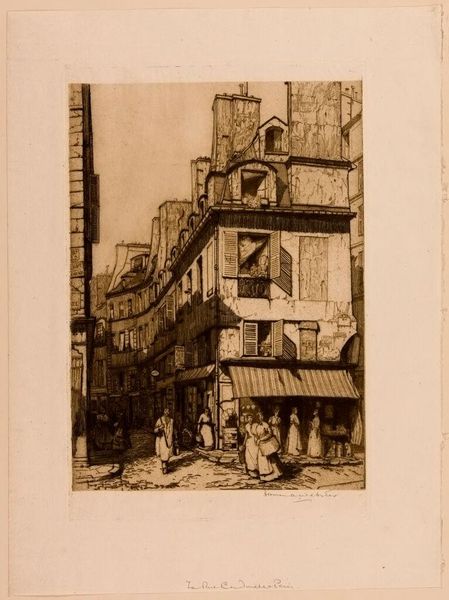
#
amateur sketch
#
quirky sketch
# print
#
pencil sketch
#
incomplete sketchy
#
personal sketchbook
#
idea generation sketch
#
sketchwork
#
pen-ink sketch
#
sketchbook drawing
#
fantasy sketch
Dimensions: image: 17.1 × 22.5 cm (6 3/4 × 8 7/8 in.) sheet: 29.5 × 33.3 cm (11 5/8 × 13 1/8 in.)
Copyright: National Gallery of Art: CC0 1.0
Editor: So, this is "Superior Street" by Briggs Dyer, created in 1934, and it’s a print. I'm immediately struck by how the sketchiness almost gives it a gloomy, Depression-era feel, even though it depicts everyday street life. What's your interpretation of the work? Curator: That "sketchiness" as you call it, is interesting because it shows an aesthetic associated with representing urban environments during this period. Considering its production during the Great Depression, how does Dyer represent economic hardship or resilience through imagery? Does it romanticize or critique the setting? Editor: I see what you mean. The businesses—a "Fresh Fish" shop and "For Rent" signs—could hint at economic struggles. But, the figures walking seem relatively composed. It’s a bit ambiguous. Does this ambiguity relate to how the era was perceived then, maybe? Curator: Precisely. The seemingly mundane scene carries weight when viewed through the lens of the socio-economic context of the 1930s. Dyer invites us to question the relationship between personal experience and larger social forces at play. Think about the intended audience for the print. Who had access to such imagery and what kind of conversation was it fostering? Editor: I hadn’t considered the audience. Was art like this meant to provide commentary, or escapism, or something else entirely during those hard times? Curator: Often, it served multiple purposes, from social commentary to an emotional outlet during hardship. Editor: This makes me appreciate how something as seemingly simple as a street scene could be a complex commentary on its time. It definitely goes beyond just a snapshot. Curator: Absolutely, it underscores the role art plays in capturing the pulse of society, reflecting and shaping our understanding of history. I never would have thought to dig this deep into this picture, thanks!
Comments
No comments
Be the first to comment and join the conversation on the ultimate creative platform.
